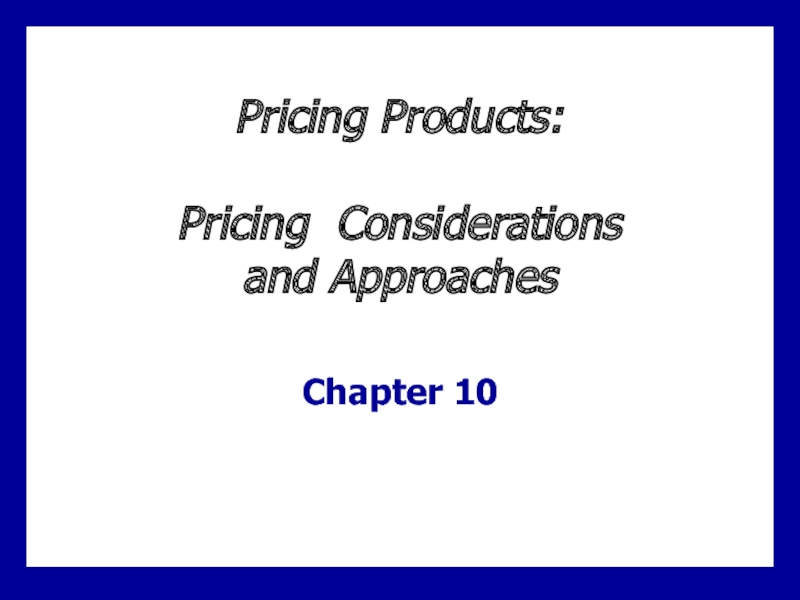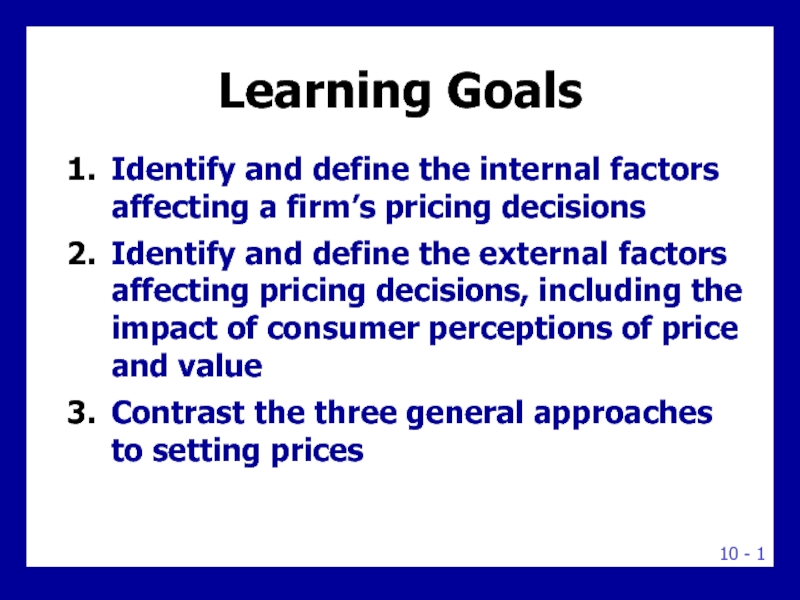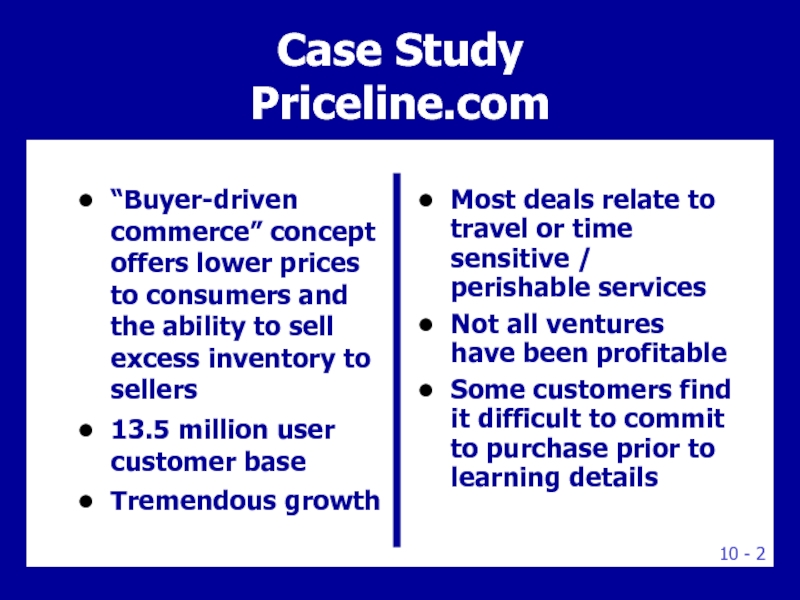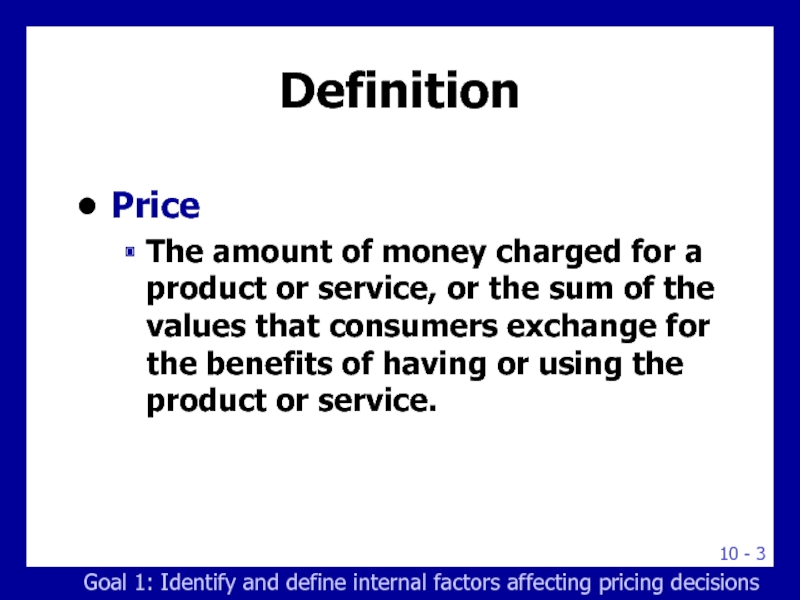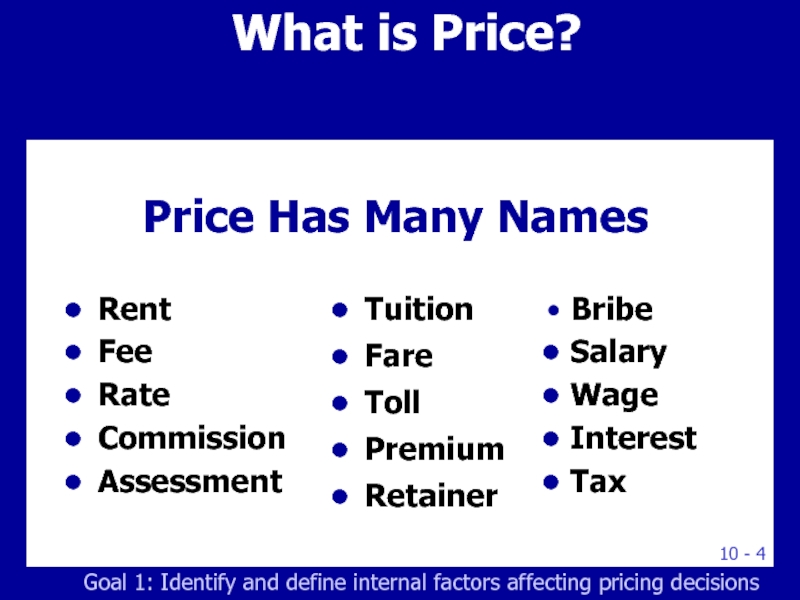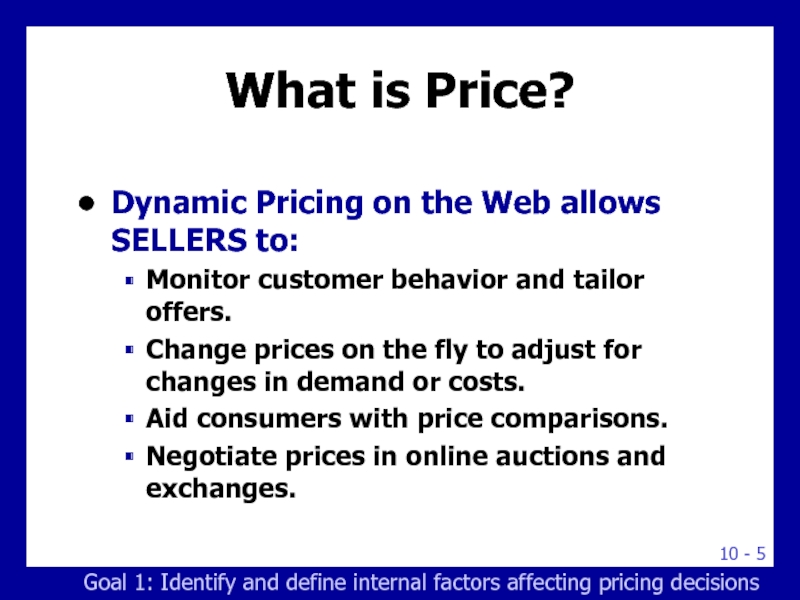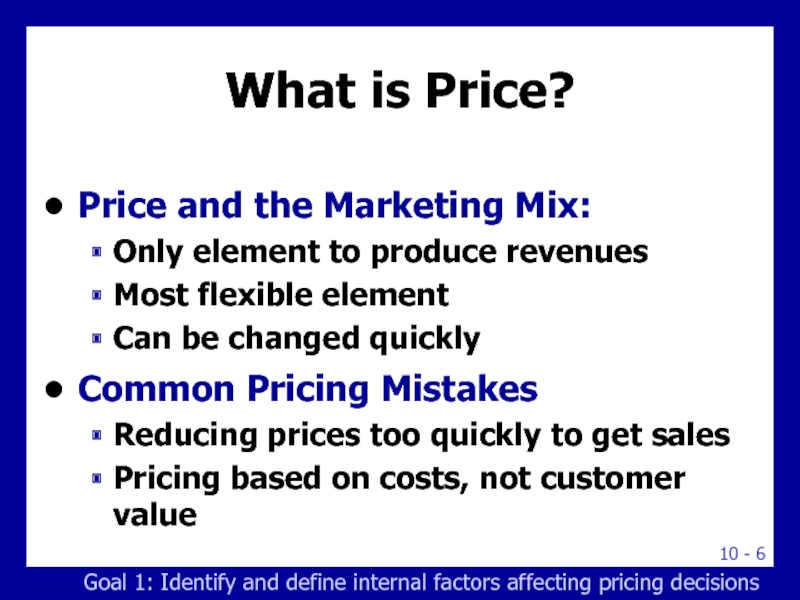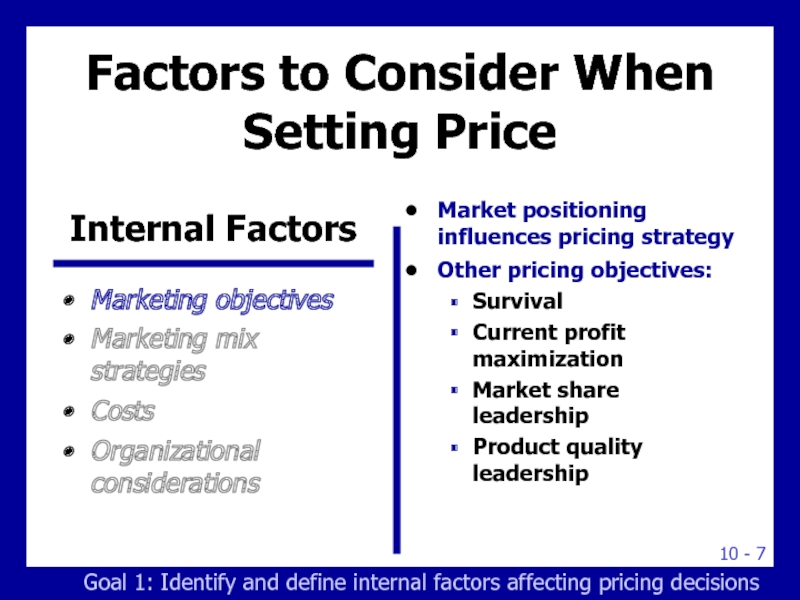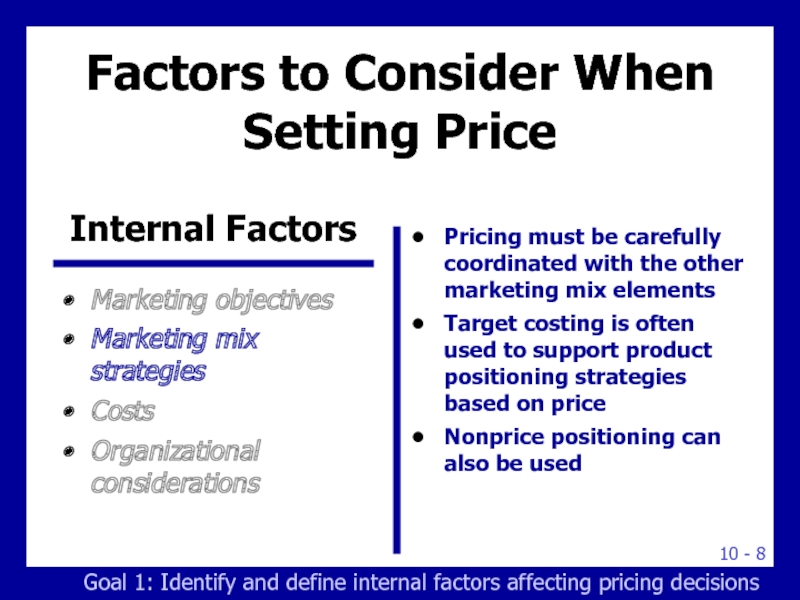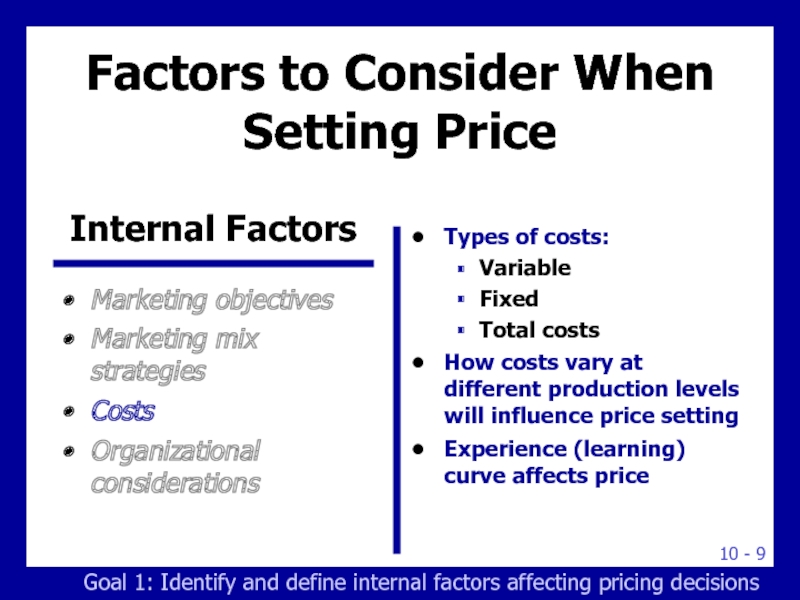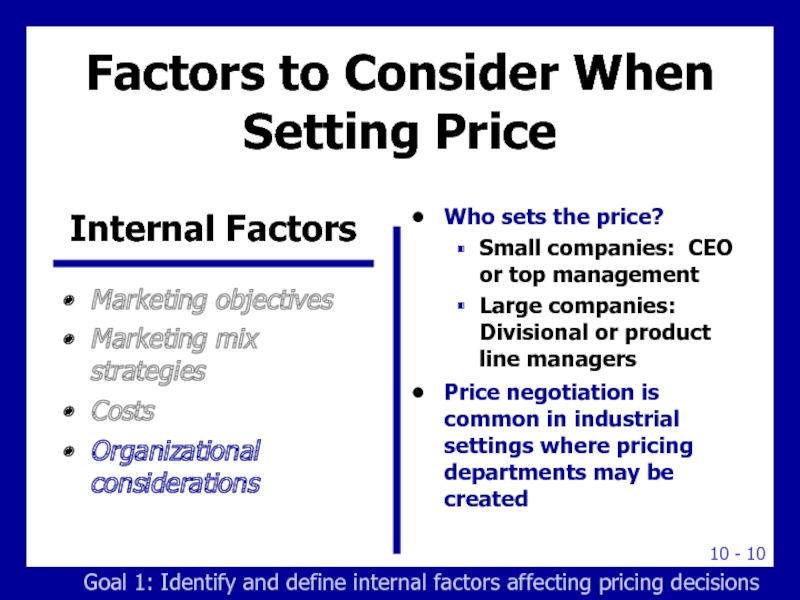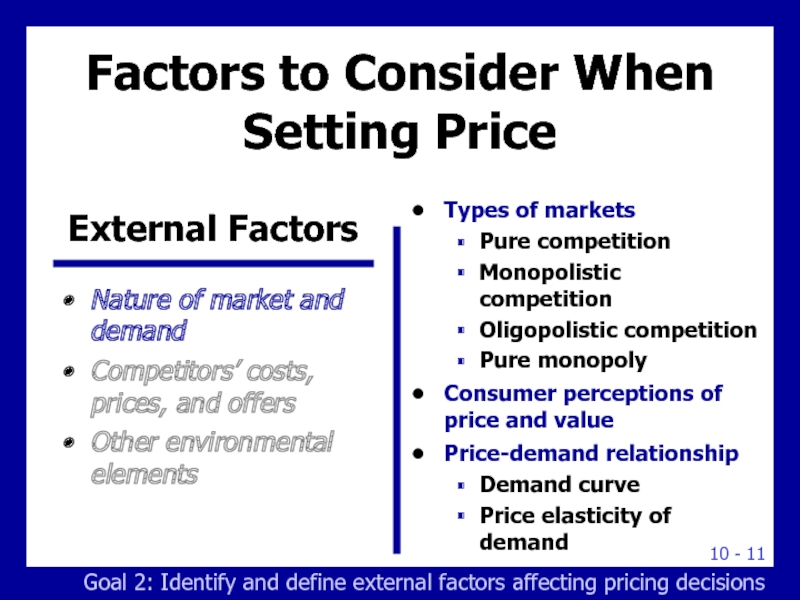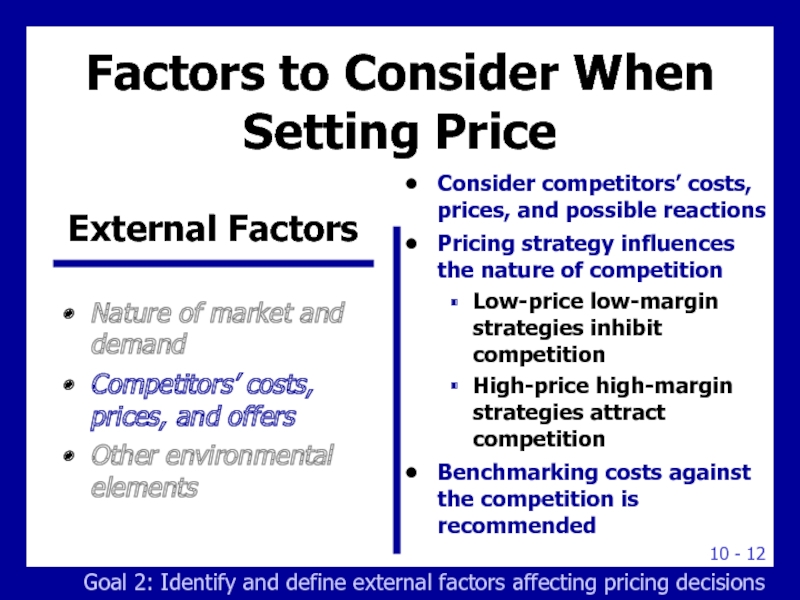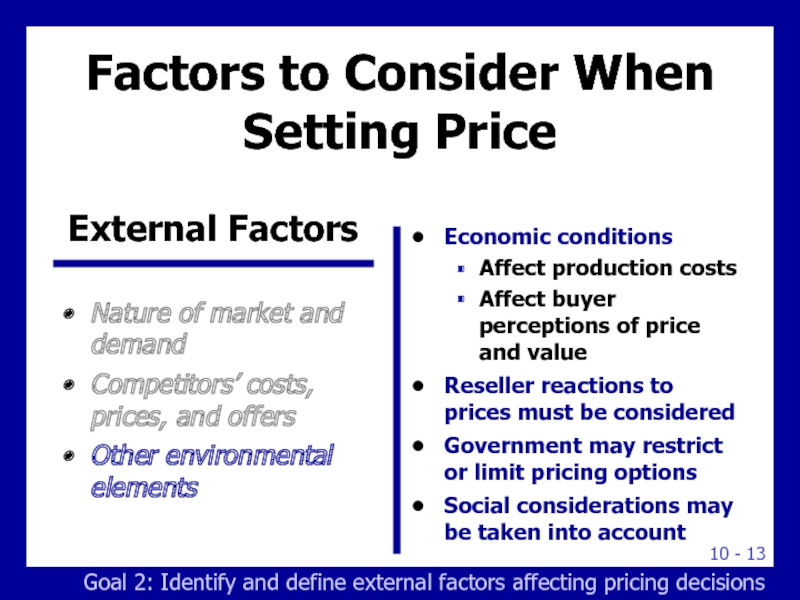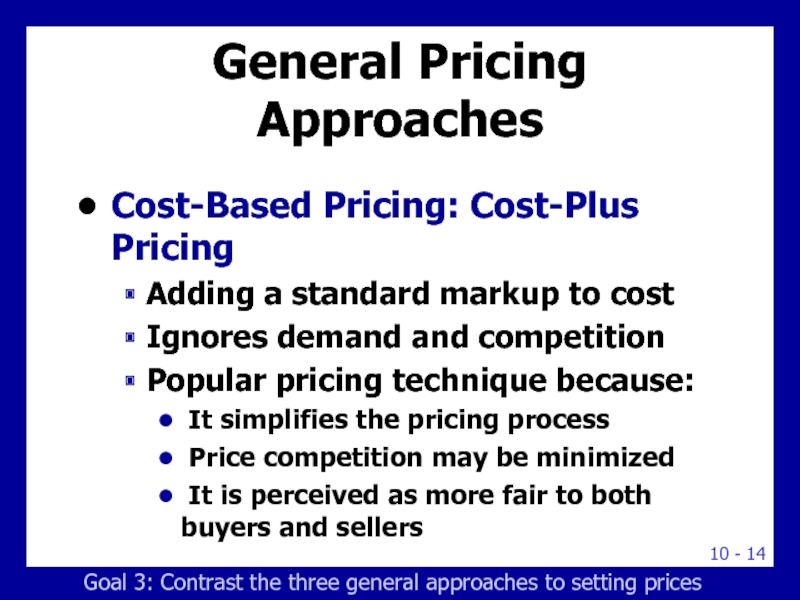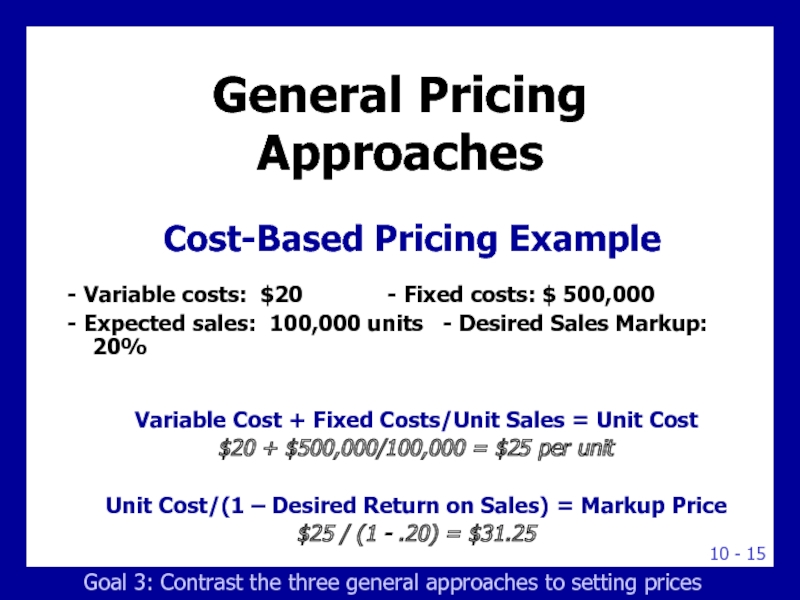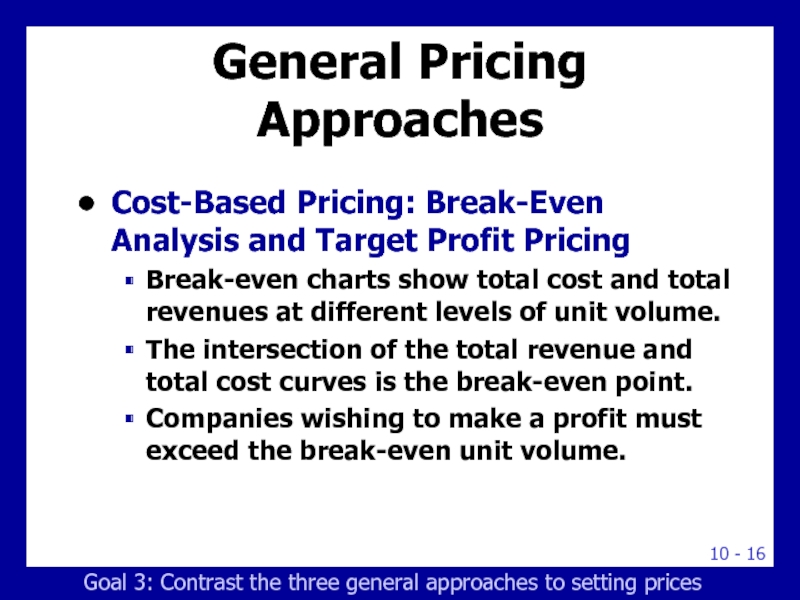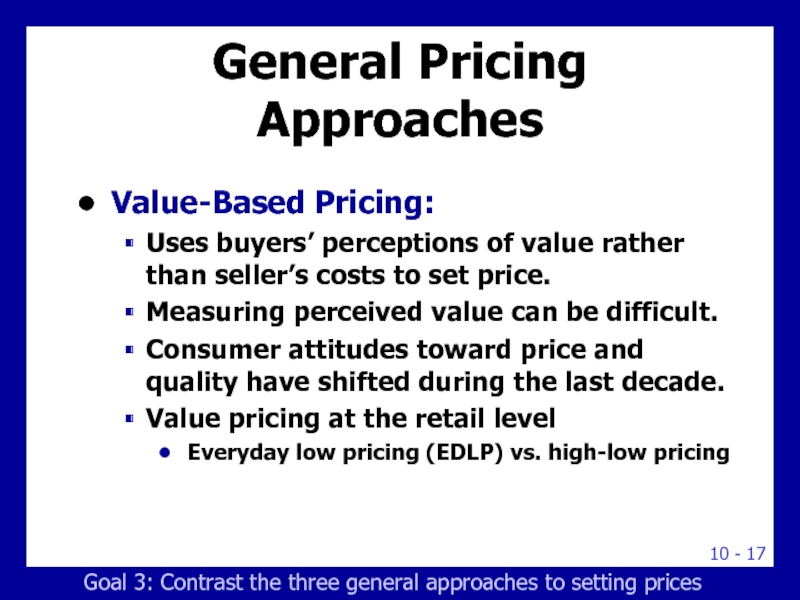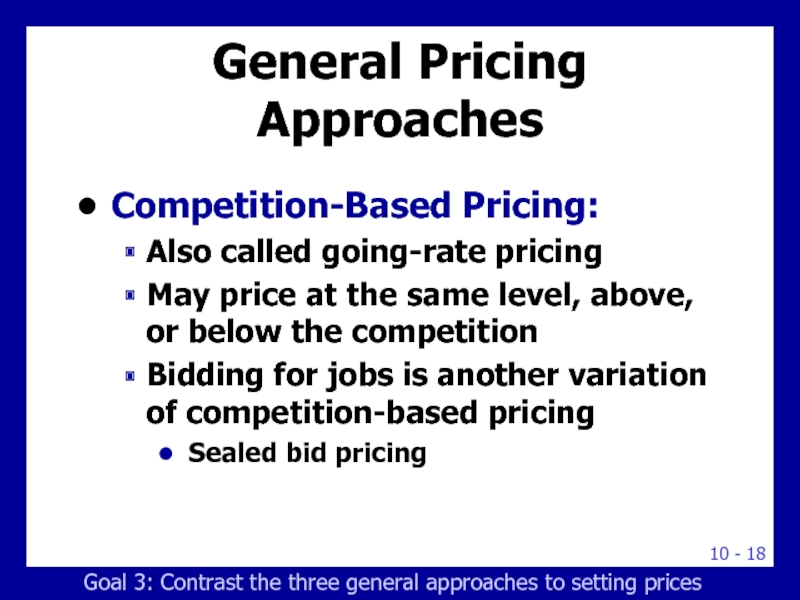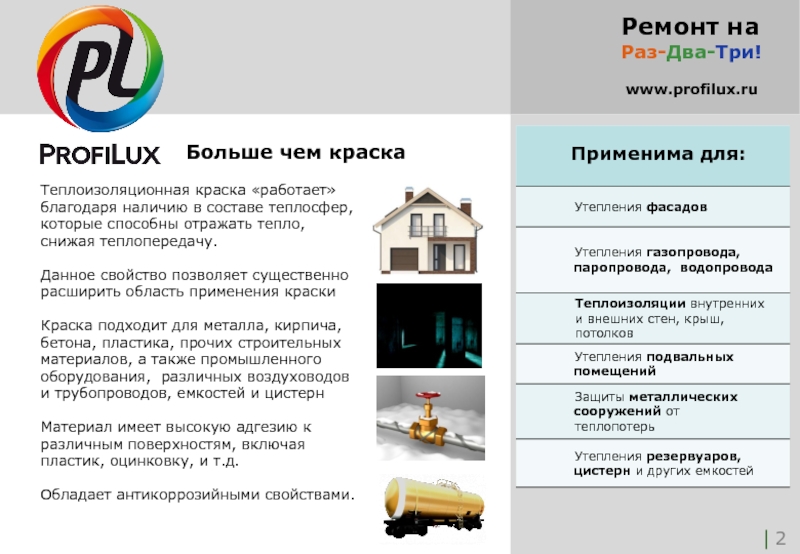- Главная
- Разное
- Дизайн
- Бизнес и предпринимательство
- Аналитика
- Образование
- Развлечения
- Красота и здоровье
- Финансы
- Государство
- Путешествия
- Спорт
- Недвижимость
- Армия
- Графика
- Культурология
- Еда и кулинария
- Лингвистика
- Английский язык
- Астрономия
- Алгебра
- Биология
- География
- Детские презентации
- Информатика
- История
- Литература
- Маркетинг
- Математика
- Медицина
- Менеджмент
- Музыка
- МХК
- Немецкий язык
- ОБЖ
- Обществознание
- Окружающий мир
- Педагогика
- Русский язык
- Технология
- Физика
- Философия
- Химия
- Шаблоны, картинки для презентаций
- Экология
- Экономика
- Юриспруденция
Pricing products: pricing considerations and approaches. Chapter 10 презентация
Содержание
- 1. Pricing products: pricing considerations and approaches. Chapter 10
- 2. Learning Goals Identify and define the internal
- 3. Case Study Priceline.com “Buyer-driven commerce” concept
- 4. Definition Price The amount of money charged
- 5. Price Has Many Names What is
- 6. What is Price? Dynamic Pricing on the
- 7. What is Price? Price and the Marketing
- 8. Factors to Consider When Setting Price Marketing
- 9. Factors to Consider When Setting Price Marketing
- 10. Factors to Consider When Setting Price Marketing
- 11. Factors to Consider When Setting Price Marketing
- 12. Factors to Consider When Setting Price Nature
- 13. Factors to Consider When Setting Price Nature
- 14. Factors to Consider When Setting Price Nature
- 15. General Pricing Approaches Cost-Based Pricing: Cost-Plus Pricing
- 16. Cost-Based Pricing Example -
- 17. General Pricing Approaches Cost-Based Pricing: Break-Even Analysis
- 18. General Pricing Approaches Value-Based Pricing: Uses buyers’
- 19. General Pricing Approaches Competition-Based Pricing: Also called
Слайд 2Learning Goals
Identify and define the internal factors affecting a firm’s pricing
Identify and define the external factors affecting pricing decisions, including the impact of consumer perceptions of price and value
Contrast the three general approaches to setting prices
Слайд 3
Case Study
Priceline.com
“Buyer-driven commerce” concept offers lower prices to consumers and the
13.5 million user customer base
Tremendous growth
Most deals relate to travel or time sensitive / perishable services
Not all ventures have been profitable
Some customers find it difficult to commit to purchase prior to learning details
Слайд 4Definition
Price
The amount of money charged for a product or service, or
Goal 1: Identify and define internal factors affecting pricing decisions
Слайд 5Price Has Many Names
What is Price?
Rent
Fee
Rate
Commission
Assessment
Tuition
Fare
Toll
Premium
Retainer
Bribe
Salary
Wage
Interest
Tax
Goal
Слайд 6What is Price?
Dynamic Pricing on the Web allows SELLERS to:
Monitor customer
Change prices on the fly to adjust for changes in demand or costs.
Aid consumers with price comparisons.
Negotiate prices in online auctions and exchanges.
Goal 1: Identify and define internal factors affecting pricing decisions
Слайд 7What is Price?
Price and the Marketing Mix:
Only element to produce revenues
Most
Can be changed quickly
Common Pricing Mistakes
Reducing prices too quickly to get sales
Pricing based on costs, not customer value
Goal 1: Identify and define internal factors affecting pricing decisions
Слайд 8Factors to Consider When Setting Price
Marketing objectives
Marketing mix strategies
Costs
Organizational considerations
Market positioning
Other pricing objectives:
Survival
Current profit maximization
Market share leadership
Product quality leadership
Internal Factors
Goal 1: Identify and define internal factors affecting pricing decisions
Слайд 9Factors to Consider When Setting Price
Marketing objectives
Marketing mix strategies
Costs
Organizational considerations
Pricing must
Target costing is often used to support product positioning strategies based on price
Nonprice positioning can also be used
Internal Factors
Goal 1: Identify and define internal factors affecting pricing decisions
Слайд 10Factors to Consider When Setting Price
Marketing objectives
Marketing mix strategies
Costs
Organizational considerations
Types of
Variable
Fixed
Total costs
How costs vary at different production levels will influence price setting
Experience (learning) curve affects price
Internal Factors
Goal 1: Identify and define internal factors affecting pricing decisions
Слайд 11Factors to Consider When Setting Price
Marketing objectives
Marketing mix strategies
Costs
Organizational considerations
Who sets
Small companies: CEO or top management
Large companies: Divisional or product line managers
Price negotiation is common in industrial settings where pricing departments may be created
Internal Factors
Goal 1: Identify and define internal factors affecting pricing decisions
Слайд 12Factors to Consider When Setting Price
Nature of market and demand
Competitors’ costs,
Other environmental elements
Types of markets
Pure competition
Monopolistic competition
Oligopolistic competition
Pure monopoly
Consumer perceptions of price and value
Price-demand relationship
Demand curve
Price elasticity of demand
External Factors
Goal 2: Identify and define external factors affecting pricing decisions
Слайд 13Factors to Consider When Setting Price
Nature of market and demand
Competitors’ costs,
Other environmental elements
Consider competitors’ costs, prices, and possible reactions
Pricing strategy influences the nature of competition
Low-price low-margin strategies inhibit competition
High-price high-margin strategies attract competition
Benchmarking costs against the competition is recommended
External Factors
Goal 2: Identify and define external factors affecting pricing decisions
Слайд 14Factors to Consider When Setting Price
Nature of market and demand
Competitors’ costs,
Other environmental elements
Economic conditions
Affect production costs
Affect buyer perceptions of price and value
Reseller reactions to prices must be considered
Government may restrict or limit pricing options
Social considerations may be taken into account
External Factors
Goal 2: Identify and define external factors affecting pricing decisions
Слайд 15General Pricing Approaches
Cost-Based Pricing: Cost-Plus Pricing
Adding a standard markup to cost
Ignores
Popular pricing technique because:
It simplifies the pricing process
Price competition may be minimized
It is perceived as more fair to both buyers and sellers
Goal 3: Contrast the three general approaches to setting prices
Слайд 16 Cost-Based Pricing Example
- Variable costs: $20 -
- Expected sales: 100,000 units - Desired Sales Markup: 20%
Variable Cost + Fixed Costs/Unit Sales = Unit Cost
$20 + $500,000/100,000 = $25 per unit
Unit Cost/(1 – Desired Return on Sales) = Markup Price
$25 / (1 - .20) = $31.25
General Pricing Approaches
Goal 3: Contrast the three general approaches to setting prices
Слайд 17General Pricing Approaches
Cost-Based Pricing: Break-Even Analysis and Target Profit Pricing
Break-even charts
The intersection of the total revenue and total cost curves is the break-even point.
Companies wishing to make a profit must exceed the break-even unit volume.
Goal 3: Contrast the three general approaches to setting prices
Слайд 18General Pricing Approaches
Value-Based Pricing:
Uses buyers’ perceptions of value rather than seller’s
Measuring perceived value can be difficult.
Consumer attitudes toward price and quality have shifted during the last decade.
Value pricing at the retail level
Everyday low pricing (EDLP) vs. high-low pricing
Goal 3: Contrast the three general approaches to setting prices
Слайд 19General Pricing Approaches
Competition-Based Pricing:
Also called going-rate pricing
May price at the same
Bidding for jobs is another variation of competition-based pricing
Sealed bid pricing
Goal 3: Contrast the three general approaches to setting prices
